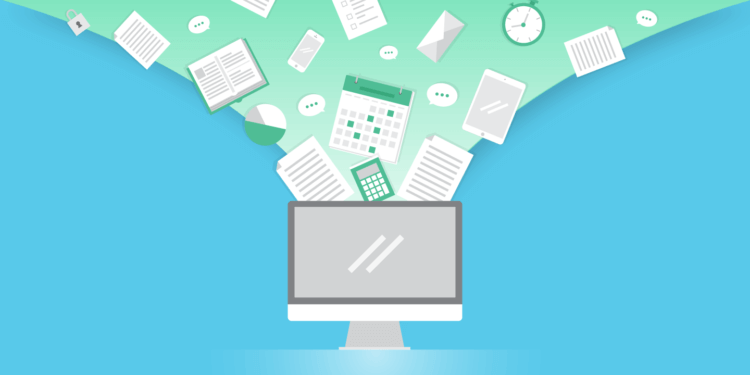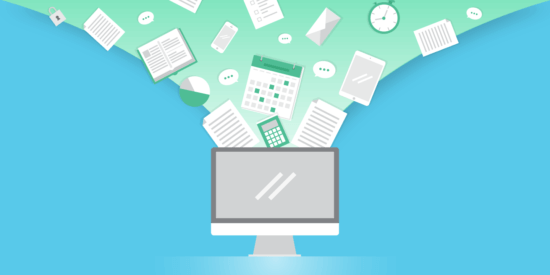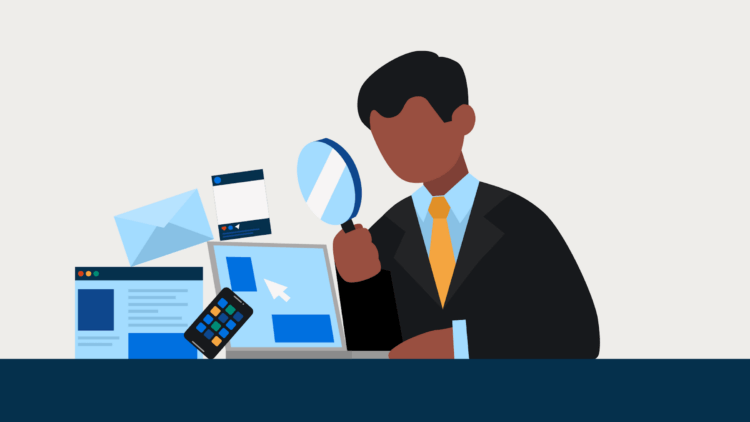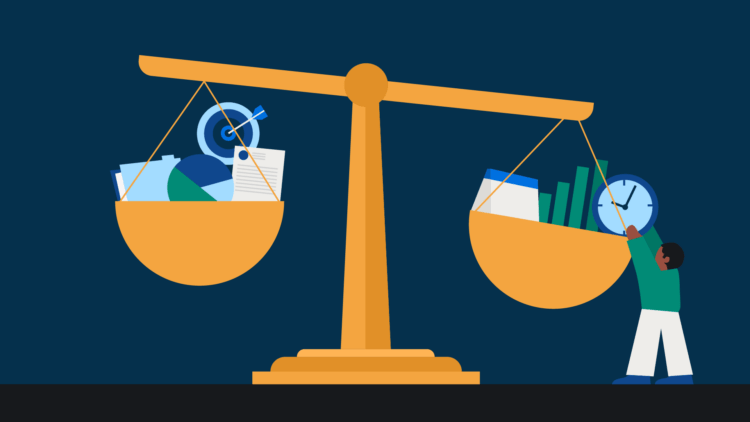For lawyers and legal professionals, the discovery process has changed dramatically in recent years. What started out as a need to share and review paper documents has mushroomed into a potential need to share and review emails, text messages, images, social media messages, and other electronically stored information (ESI) as part of the eDiscovery process.
The world is going through a digital information explosion, and with traditional eDiscovery tools that require manual processes, eDiscovery can be a challenge for many firms. “[Data] just keeps exploding,” said Andy Wilson, CEO and Co-founder of Logikcull. “With discovery, there’s a deadline, and the deadline doesn’t care about your data problems.”
Beyond that, handling data incorrectly during the eDiscovery process can lead to potential problems—and even malpractice suits.
However, with the right processes, and the latest tools, eDiscovery doesn’t have to be a headache. We spoke with Andy to find out what’s most important for lawyers to know about eDiscovery, and to get his tips on how to get through the process as efficiently as possible.
Here’s what he had to say:
1. Know the basics
So far, 28 U.S. states have adopted the duty of technology competence, meaning that lawyers must “keep abreast of changes in the law and its practice, including the benefits and risks associated with relevant technology.” In other words, keeping abreast of changes of the law and its practice includes keeping abreast of the benefits and risks of relevant technology. If you haven’t kept yourself up to date on how the latest technology can help you run processes like eDiscovery in the most efficient and secure way, you could be taking a risk.
Consider this scenario put forth by Nehal Madhani of Alt Legal: “I imagine a case where you miss something and you make a mistake. Could the client argue that you breached your ethical duty because you didn’t educate yourself on all the technology that may have prevented that? Could that be part of the basis of a claim for malpractice?”
Andy agrees. “Lawyers have a duty for technical competence that’s not going to go away,” he said. “You need to understand the technology now.”
If you need to get up to speed on eDiscovery, Logikcull’s Ultimate Guide to eDiscovery is an excellent starting point. It covers everything from basic terms to an explanation of predictive coding and other more current forms of technology assisted review of ESI.
2. Know that everything is discoverable
Discovery isn’t just for documents anymore. Images, social media messages, and much, much more are all discoverable. “We’ve had people upload drone data into Logikcull,” Andy says. “There was a Fitbit case that was run through Logikcull. Everything is discoverable.”
In other words, make sure you’re considering all potentially relevant forms of ESI during the eDiscovery process, and have a plan for reviewing all of that data—you’ll almost certainly be dealing with more information than you’re expecting.
You may like these posts
3. Handle data with care
When working with ESI during the eDiscovery process, it’s important to operate in a way that doesn’t impact your data—but for many legal professionals, that’s easier said than done. As Andy explains:
It’s really easy to mess up when it comes to digital data. If you think about data, especially in the context of litigation, it’s like part of the crime scene. You don’t walk through it touching things, otherwise you could taint it.
The same general logic applies to data: If you touch it, you could taint it—so don’t touch it. For example, you could change the dates of documents. You could alter certain pieces of the data, and that could then be called into question by the court.
To avoid unintended alterations to ESI during the discovery process, try getting some practice first: Logikcull is free to use until you upload your own data, and includes a training set of data that you can use to practice your data handling skills without putting your case at risk.
4. Don’t forget about metadata
Metadata, or data about data, is also important to consider during the eDiscovery process. It can be used to organize information to make it easier to review large volumes of ESI. As Andy explains:
Imagine you’re in an Amazon warehouse, and you’re looking for a pair of red shoes from Nike, in a certain size, within a certain price range. All of those attributes about the shoe—red, size, price—are metadata.
That kind of attributive information is all over the place in documents. Think about an email: You’ve got the send time. You got the received time. You’ve got the subject line. You’ve got the sender, the recipient, anyone who was bcc’d, and the attachments—all those things are metadata. If you have smart software it can go through and identify all those things, pull them out, and organize them into meaningful categories.
Also, metadata may be necessary to confirm the authenticity of information. There are plenty of examples of digital evidence being denied in court—making it doubly important to handle data with care and to check social media posts, emails, documents, and other types of information for accurate metadata when reviewing ESI.
5. Store and transfer data securely
Keeping data secure during the discovery process isn’t as simple as one might think. Transferring ESI between parties, or even storing ESI during the discovery process, can put data at risk if it isn’t done carefully. Andy explains:
Discovery is one of the riskiest things out there. I think the biggest reason is that discovery, by its nature, requires information to move. Discovery is the exchange of information. And usually what we hear people do is they’ll take data, they’ll put it on some sort of physical media like a DVD or CD or thumb drive or hard drive—sometimes they’ll use FTP sites or Box or something similar.
What happens after that? Who has access to it? This could be some of the most sensitive data in the world, but it’s out of your secure hands.
It’s important to take extra care when transferring and storing ESI during the discovery process—encrypt any electronic communications and any devices on which you’re storing data or on which you’ve logged into cloud-based accounts that are storing secure data. Use two-factor authentication for any cloud-based accounts and if you’re using eDiscovery tools and services, choose those with a reputation for data security.
Which brings us to our next point:
6. Use the right tools
There are plenty of bases to cover when it comes to eDiscovery, but with the right tools, your firm can get through the process efficiently, and at a low cost.
Look for secure tools or services with clear costs—some services still charge extra for Bates stamps, for example. Also, make sure you’re using cutting edge technologies to help speed up the process while reducing risk of error.
Logikcull, for example, automates many essential processing steps that come with eDiscovery. Then, once you securely upload ESI to Logikcull, it can be culled, searched, and reviewed for relevance and confidentiality. Logikcull also integrates directly with Clio, removing the need for duplicate data entry.
All of these considerations can make a big difference: Andy told the story of a pro se litigant facing a frivolous patent lawsuit who almost spent six figures on an eDiscovery solution. He used Logikcull instead, spent $200, and won his case. Meanwhile, a city in the United States has reduced the turnaround time on Freedom of Information requests from three weeks to one day using Logikcull.
“We’ve heard a story of a paralegal uploading half a million emails in an afternoon. By later that afternoon she had isolated around 70 documents or so, while she was doing other things,” Andy said. “Previously, that would’ve taken her upwards of six months of time.”
In the digital age, your knowledge of technology as it applies to eDiscovery—and the tools you use—need to keep moving forward in parallel with the data explosion currently underway. Electronic information will continue to increase exponentially, so it’s never been more important for legal professionals to stay up-to-date on tools and practices that can help them keep up when it comes to eDiscovery.
By staying informed, legal professionals will keep their firms moving through the eDiscovery process quickly, cost-effectively, and worry free.
With Clio and Logikcull together, eDiscovery is simpler than you’ve ever thought possible. Learn more about Logikcull and Clio.
We published this blog post in March 2018. Last updated: .
Categorized in: Business, Technology
Clio Duo is Coming Soon
Meet Clio Duo, the AI-powered partner you've been waiting for. Be among the first to see it in action.
Notify me when Clio Duo is ready








